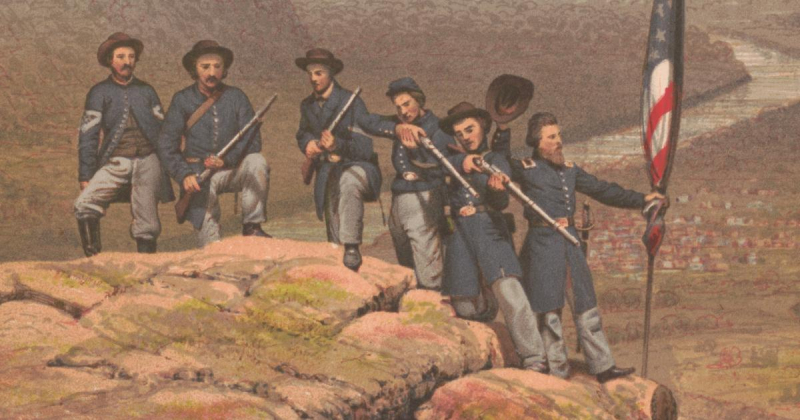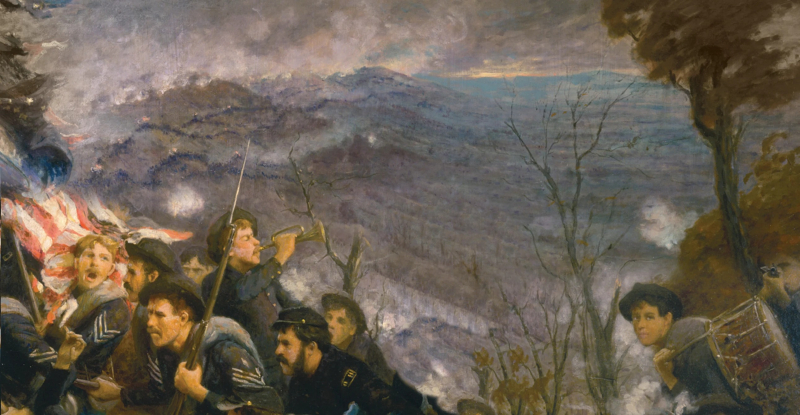The grand Union charge up Missionary Ridge was unplanned.
By 3 PM on November 25, General Grant became concerned about the fate of Sherman north of Missionary Ridge. Realizing he was in trouble and the Confederacy had only hours to win, Grant called General Thomas J. Wood of General Thomas's 4th Army carried gun holes at the foot of the mountain. Grant hoped that such a demonstration would put enough pressure on Bragg to send troops from his right to the center to secure the rifle pits, easing the pressure on Sherman's men. After Wood's men captured the rifle pits, they realized that they would not be able to stay there without being destroyed by Confederate artillery. Despite orders to hold their position, Union troops began advancing on Missionary Ridge. The Union troops fought the Confederate artillery fire with great force, as they were contained for most of the battle. As the Confederates battled the fortifications, the Confederate forces began to retreat, and eventually, Bragg's center of defense was completely breached by the Confederate advance.
Regarding Missionary Ridge, what was originally meant to be a rally to help Sherman win the north, turned into what one officer called the greatest spectacle. In fact, Grant's three major victories at Orchard Knob, Lookout Mountain, and the Confederate heart of the Confederacy were all planned rallies purely by raids, while the attack was planned. His plan at Tunnel Hill failed. Ulysses S. Grant assaulted Missionary Ridge and defeated the Confederate Army of Tennessee, commanded by Gen. Braxton Bragg, forcing it to retreat to Georgia. Missionary Ridge was so named for the early missionaries who made their way along paths climbing the ridge on their way to Brainerd Village to the settlement of the Cherokee. It was also referred to as "Mission Ridge" in the early years. The southernmost end of the ridge extends into Georgia. This is an indispensable fact in the list of facts about the battle of Chattanooga.









